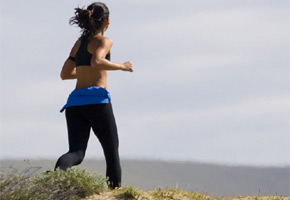

Research presents scientific advances on the effects of physical activity (Wikimedia)
Researchers present scientific advances on the effects of physical activity
Researchers present scientific advances on the effects of physical activity

Research presents scientific advances on the effects of physical activity (Wikimedia)
By Fábio de Castro
Agência FAPESP – Practicing regular physical activity is considered one of the most important strategies for promoting health. Yet, only in the past 10 years has this subject begun to be explored from a scientific point of view in Brazil.
The recently released book Epidemiology of physical activity (Epidemiologia da atividade física) brings together essays from specialists who study various aspects of physical activity, including its history, measurement criteria and recommendations for practicing physical activity, the best current intervention practices to promote these activities in Brazil and worldwide, and its importance in chronic disease prevention.
Organized by Alex Antonio Florindo, a professor at the Arts, Sciences and Humanities School (EACH) at Universidade de São Paulo (USP), and Pedro Curi Hallal, a professor at that Universidade Federal de Pelotas (UFPel), the book was launched during the Brazilian Conference on Physical Activity and Health held in Gramado, Rio Grande do Sul state in November 2011.
Florindo, who currently teaches in the Physical Activity Sciences program at EACH-USP and has post-graduate students at USP’s Public Health School, currently coordinates the project “Study of interventions to promote physical activities in Public Health System by strategy of family healthts,” funded by FAPESP under the Regular Research Awards program. Hallal is involved in UFPel’s Physical Education School and the graduate program at the Epidemiology Center at the same institution.
According to Florindo, the book has the general objective of describing the phenomenon of physical activity at the population level. “We proposed the topic because Brazil did not have a book that brings together the in-depth knowledge acquired in this area. We invited contributors from different parts of the country to study physical activity in the population in detail,” explains Florindo in an interview with Agência FAPESP.
Florindo explained that, after his master’s and doctoral theses – both concluded at FSP-USP with FAPESP fellowships – he coordinated the project “Physical activity and its relation to individual and environmental variables in the elderly population of the Ermelino Matarazzo district.”
“That project aimed to verify the environmental factors that were associated with physical activity in the adult population of the Ermelino Matarazzo neighborhood, where EACH-USP is located. We worked with several topics, such as the validation of methods to evaluate physical activity in the population and the impact of these activities in the prevention of chronic disease. But recently, FAPESP supported another project that allowed us to study the promotion of physical activity. The book follows these lines of research,” he explained.
The Brazilian perspective
According to Florindo, as its role in preventing several diseases and improving quality of life is confirmed, the physical activity and health area is growing in Brazil and abroad, particularly within the context of a global epidemic of obesity and cardiovascular and metabolic diseases.
“The number of researchers in the area has increased, and, in Brazil, we have seen major advances over the last 10 years, with several people receiving PhDs in the area. The health benefits have been proven, but now it is fundamental to continue studying, principally to improve our strategies for the promotion of physical activity among the population,” said Florindo.
According to Florindo, the development of Brazilian research in this area is fundamental. Studies involving the biological aspects of the relationship between physical activity and health cannot always be extrapolated to other countries.
“When it involves promoting physical activity, the need to develop studies in Brazil is even greater because this promotion involves cultural and social factors that change according to the environment. Therefore, it is very difficult to apply the strategies developed in the United States or Europe in Brazil,” said Florindo.
The first chapter of the book introduces the terminology, the concept and the history of the study of physical activity from the population’s point of view, specifying the terminology of descriptive and analytical epidemiology.
“The second chapter outlines a history of physical and health activity from its origins in the 20th century. The third chapter deals with measuring the population’s physical activity, and the fourth deals with recommendations for physical activity practices in specific cases of children, adolescents, adults and the elderly. The fifth chapter describes the prevalence of physical activity in Brazil and the world in each populational category,” explains Florindo.
The sixth chapter deals with the barriers related to physical activity, identifying the factors that impede individuals from initiating or continuing physical activity. The seventh chapter debates the topic “Physical activity and environment,” describing a physical and social environment that is propitious to activity.
The eighth chapter covers the study and practice of physical activity throughout one’s life, and the ninth chapter discusses the knowledge of the population on the benefits of physical activity and how much this influences individual practice.
“In the tenth chapter, we speak about basic attention or, rather, how physical activity has been developed in the context of SUS. In chapter 11, we discuss physical activity and the prevention of non-chronic diseases. In chapter 12, we speak about the promotion of physical activity interventions in Brazil, and, in chapter 13, we take a look at the future of the epidemiology of physical activity,” Florindo explains.
Republish
The Agency FAPESP licenses news via Creative Commons (CC-BY-NC-ND) so that they can be republished free of charge and in a simple way by other digital or printed vehicles. Agência FAPESP must be credited as the source of the content being republished and the name of the reporter (if any) must be attributed. Using the HMTL button below allows compliance with these rules, detailed in Digital Republishing Policy FAPESP.




